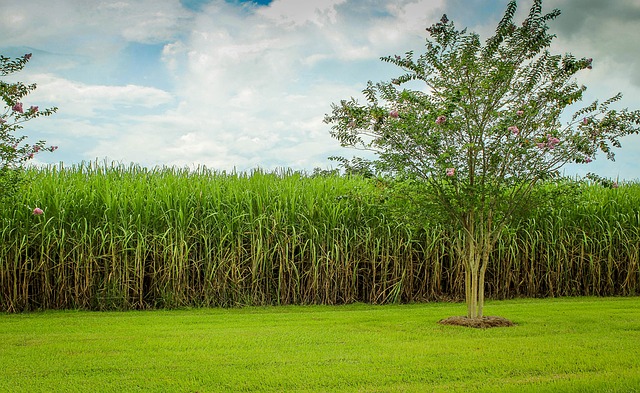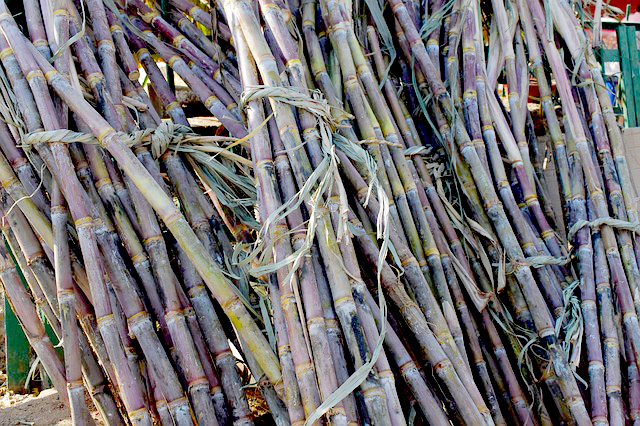
Complete Guide For Sugarcane Cultivation In India
Sugarcanes are a form of high importance in the state of Uttar Pradesh. Being the state that produces these bamboo plants the most, it is well known for having the best quality of sugarcane. “Gur” and “Khandsari” are a necessity in India. Since sugarcanes are the main source of these, it is important to know how they are cultivated and distributed as well. We will be breaking down the different stages as to how sugarcanes are cultivated here in India.
Contents
1. Uses
Apart from being the main source for sugar production, there is another interesting fact about this bamboo-family plant. They are apparently responsible for providing raw material that goes into making alcohol. The cultivation of sugarcane can be useful for making paper, as a substitute for petroleum and other chemical products as well.
Sugarcanes are one of the most produced and most cherished commercial crops in the country. We shall be now stepping into the cultivating details of this crop.
2. Favorable Growth Factors
In the country of India, which has so many diverse crops cultivated, the sugarcane is seen as a Kharif crop. This usually means that it requires hot and heavily humid climate in order to grow. However, it also requires some favorable amount of rainfall (75-100 cm). In areas with less rainfall, well executed irrigation procedure is required.
a) Soil
There isn’t a particular type of soil required to grow sugarcane crops. However, it can ideally grow in any type of soil that is able to retain moisture well. Think about deep and rich soil. When it comes to mineral proportions, nitrogen and calcium are important. Keep in mind though, that the levels of acidity shouldn’t be too much. The same rule goes for how alkaline it is.
b) Ripening And Harvesting
Having a short cool and dry winter season during ripening and harvesting stages should be ideal.
c) Don’ts
One must be careful when cultivating sugarcanes and when it is done. This is because sugarcane crops aren’t immune to frost situations. In order to avoid the wastage of crops, the harvesting stage must be completed before frost season appears. Not only this, but too much of hot and windy climates can also ruin the sugarcane. There should be a happy medium.
d) Labor
Since sugarcane cultivation in India is a massive task, it requires a massive force. Sowing, hoeing and weeding needs to be done. There are many other stages as well which is why a lot of laborers might be required.
3. Planting Methods
 In India, famers use about four main types of sugarcane cultivation methods. Below, we have briefed all four so you know how the crops are cultivated.
In India, famers use about four main types of sugarcane cultivation methods. Below, we have briefed all four so you know how the crops are cultivated.
a) Ridge and Furrow method
Starting with the most common one used by farmers, we have the Ridge and Furrow method. Sugarcane farming requires intensive work which is probably why it has different methods. This particular one is used mostly in the state of Maharashtra. The ridges and furrows are first opened by keeping a particular amount of distance between them. Now, there are sub-methods added to this. These are the dry and wet method.
b) Flat Bed Method
The second method of sugarcane cultivation in India is something called the flat bed method. This method is mainly used in the number one producer of the crop, Uttar Pradesh. Firstly, the land used is ploughed, harrowed and leveled. This is done as a primary step after which the “flat beds” are made. Canes are laid down after measuring specific amounts of distance between them. This method is used only in areas with ample of moisture supply.
c) Rayungan Method
This method is unique as it is followed usually when there are riverside fields present. Since these areas face floods often in their fields, this method saves them from the damage. The single buds are planted vertically in nurseries.
d) The Trench Method
Also known as the Jawa method, it is practiced in Jawa and Mauritius. These “trenches” are made about 90 cm big and the soil that’s present as the bottom is loosened by being mixed with manure. The sets are then planted in the middle and irrigation is provided.
4. Sugarcane Farming Steps
We’re going to be providing with steps that farmers follow whilst engaging in sugarcane farming.
- Firstly, one must remember the factors and requirements the sugarcane needs to grow in India. After the favorable needs are met, the harvesting timing should be hit right. The stages f maturity should be set and the sugarcane crop should be harvested at that time itself. This ensures the quality and quantity of the overall crop.
- The irrigation can be done about 10-15 days before harvesting. Speaking of harvesting, it can be done by cutting the cane at the ground level with a suitable knife. The cut must be made in a slanting manner.
- The leaves and roots should be then removed completely. The so called top part should be cut off as well.
- Bundles of canes are then sent to the crusher source and are finished within a day after harvesting.
5. Production Status in India
- Like we said earlier, Uttar Pradesh is the highest producer of sugarcane in India. However, what one might not know, is that India as a country is the second highest in the world.
- We shall be looking at a few statistics to showcase the dramatic increases and decreases in cultivation of sugarcane. Apparently, it took a positive turn when it increased in 93 percent during the years between 1951 and 61. However, it suffered a decreased in the next two decades. This is depending on how farmers grow sugarcane.
- The yield of production remained high for three consecutive years, that is, 1997-98 and 1999-2000. It declined again and soon enough froze during the years of 2003-04.
- As you can see, there was a rapid decline and increase in the production. There were many factors that could have been responsible, from the weather to the soil formation. This was eminent on all the states that were relevant and depended on sugarcane cultivation in Tamil Nadu, Karnataka and Maharashtra.
| State. | Percentage.(Accountable for overall production in the country) |
| Uttar Pradesh | 70% |
| Maharashtra | 13% |
| Karnataka | 11% |
| Tamil Nadu | 11% |
| Gujarat | 4.99% |


